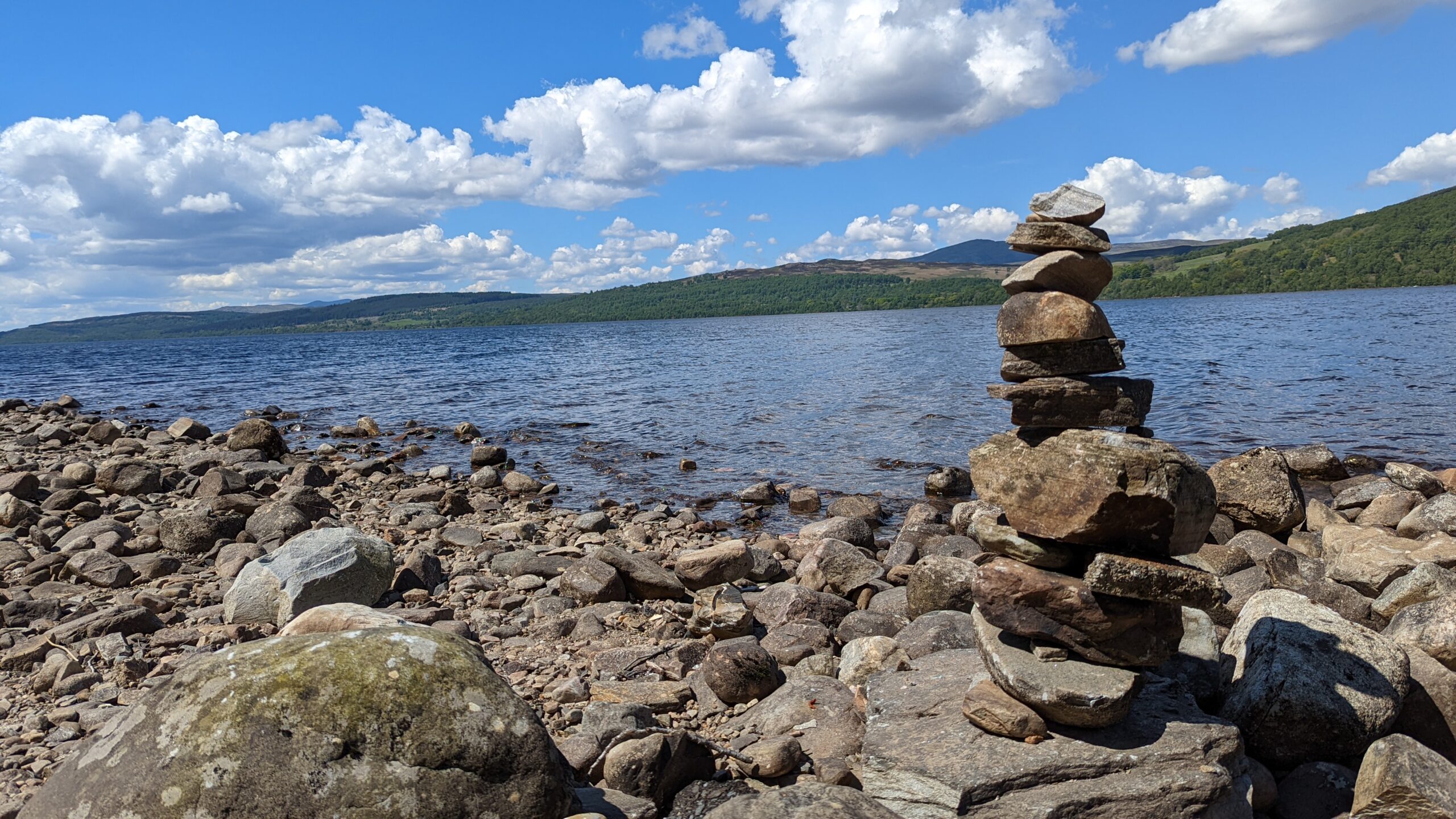For nearly twenty years now we have been lucky enough to enjoy the right to responsible access under the Land Reform (Scotland) Act 2003. Non-motorised activities such as walking, cycling, swimming, kayaking and wild camping are permitted on most land and water within Scotland. Of course this privilege comes with some responsibility and should lead us to tread lightly and leave no trace in Scotland.
The general ethos of the Scottish Outdoor Access Code (SOAC) is to:
Respect the interest of other people
Care for the environment
Take responsibility for your own actions
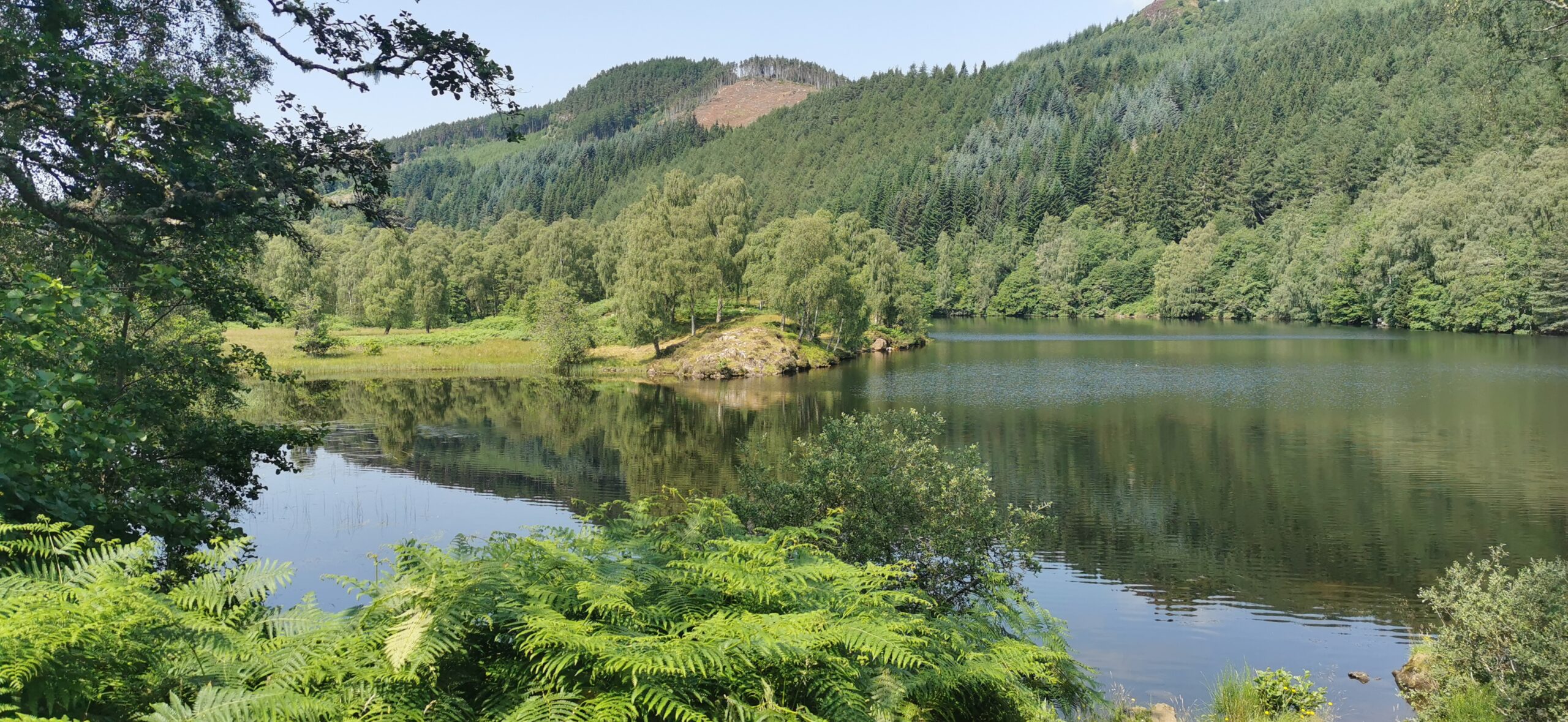
Wild camping or Car Based Camping
In pre-COVID days the term ‘wild camping’ would have meant a trek out into the hills with all your camping gear crammed into a rucksack and carried for hours before picking your single room with a view for the evening. Fast-forward to now and it’s a term used by the masses for a car load of stuff, whopping huge tents, just metres from the road to meet up with extended family and friends for a long weekend.
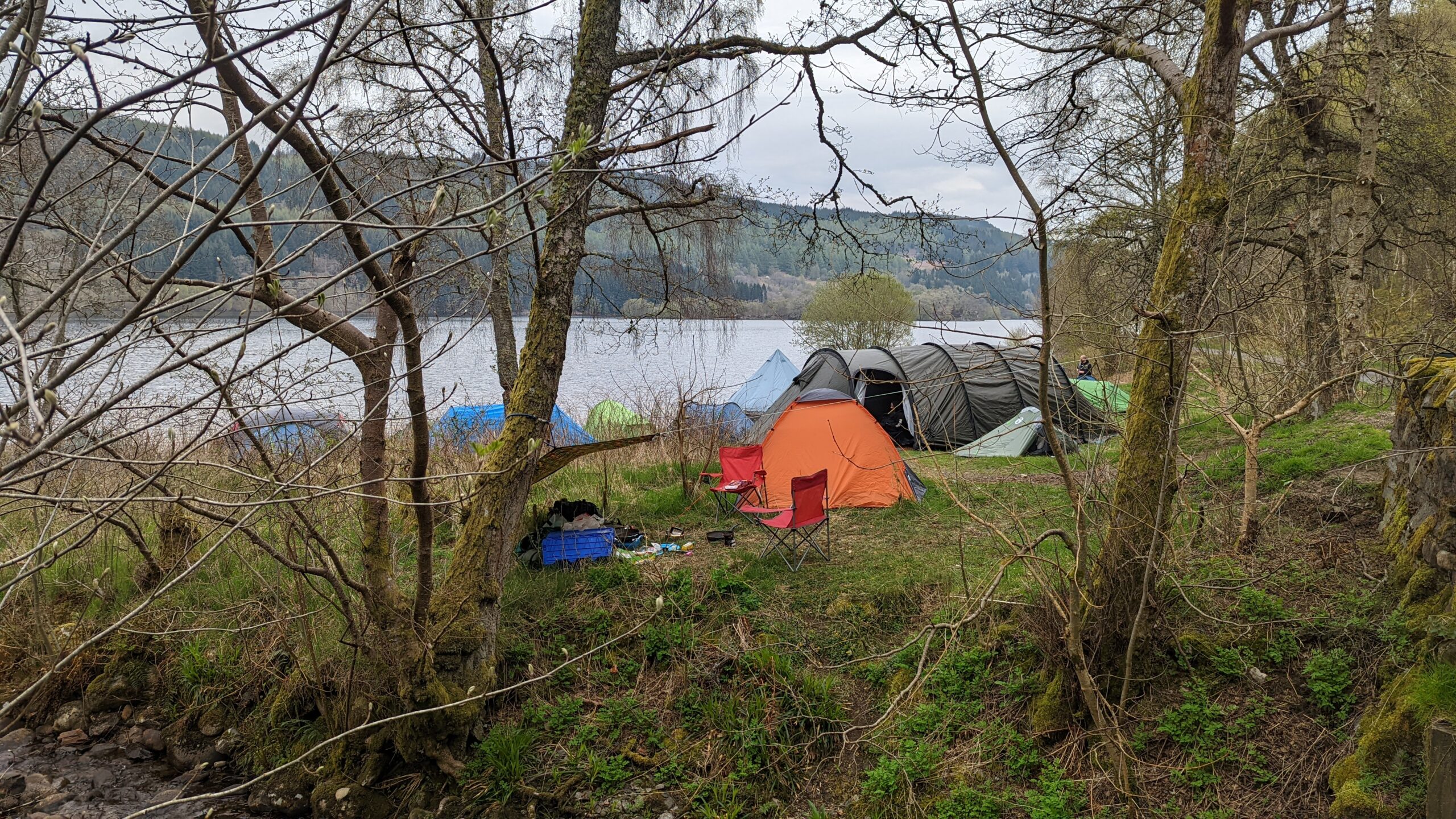
Definitely not in the true spirit of wild camping.
The term ‘dirty camping’ has also been coined to describe this kind of camping but I think that’s quite unfair to lump everyone together in this way. We’ve all seen these camps portrayed on social media (including my own) and the mess is unbelievable.
I’ve found broken glass in the lochs, beer cans in firepits, bottle tops, socks (normally just a single one), leftover food, cigarette ends and the worst is finding the toilet tissue in the bracken because you know what’s lay beneath it!
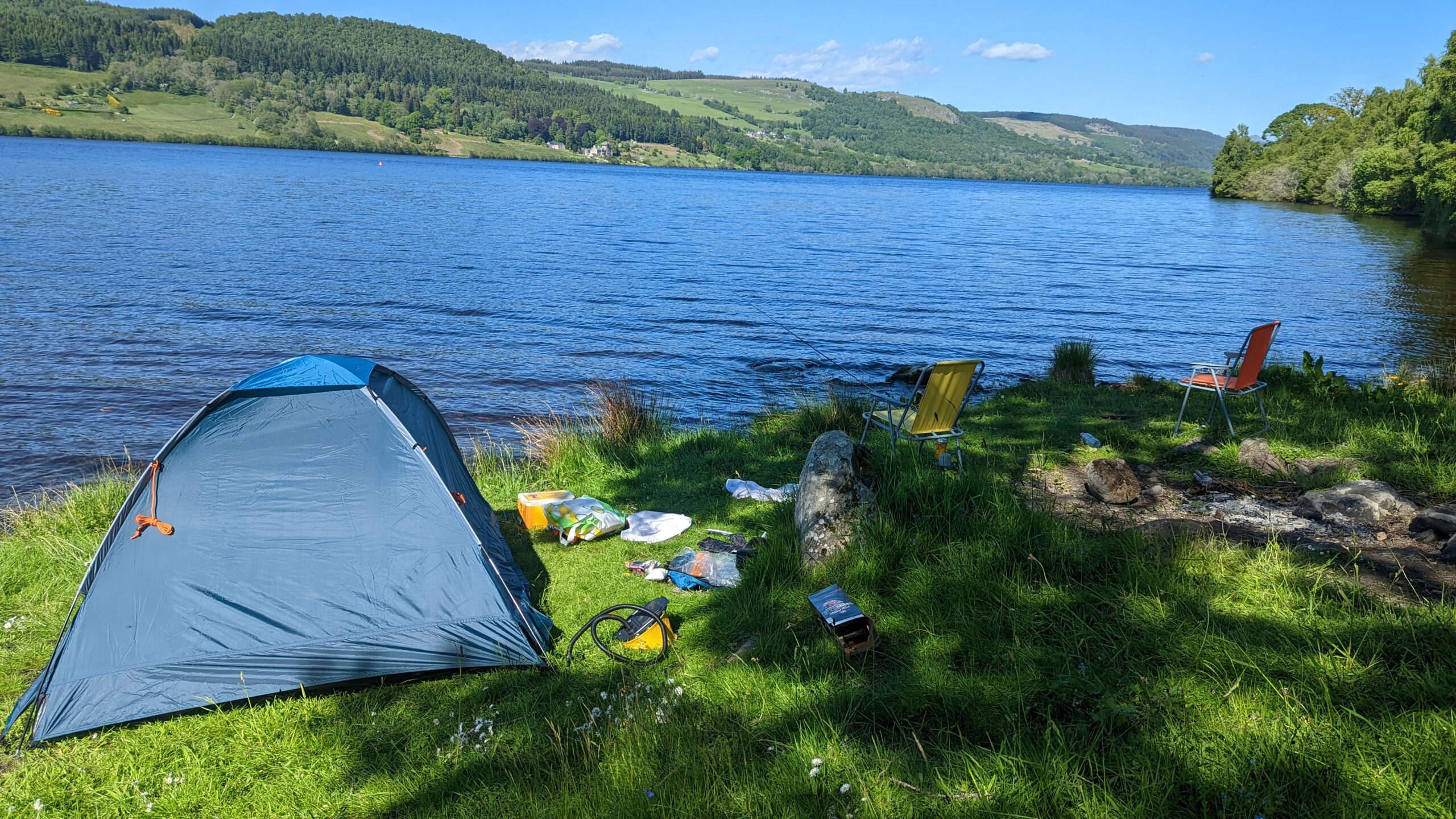
None of these are conducive with any of the key principles for SOAC.
So how can you camp responsibly? Let me share with you just a few simple ways in which to tread lightly and leave no trace in Scotland.
Choosing a camp site
It’s not just as simple as looking for a flat, sheltered bit of land to camp on.
Here’s a few examples of where Access Rights do not extend to the following places:
Buildings including schools and the land surrounding them.
Enclosed fields used for crops or livestock.
Reasonable distance should also be given to private dwellings.
In the true sense of the Outdoor Access Code it allows for a small group of people to camp for two or three nights in one place.
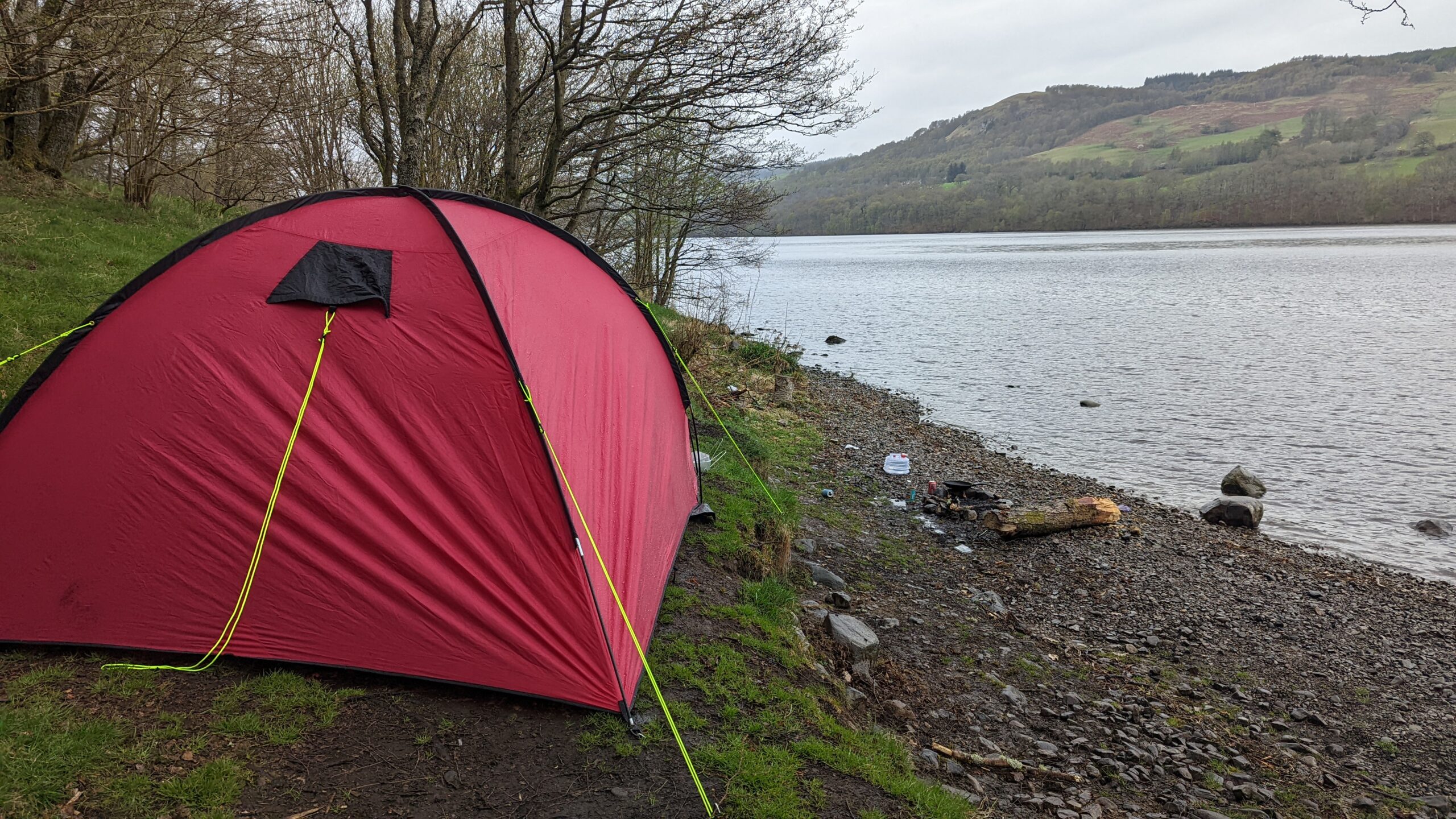
Lighting fires
The Access Code says ” wherever possible, use a stove rather than lighting a fire.”
The reality is that most people see a camp fire as part of the outdoor experience. You don’t have to spend much time outside to see the scorch marks in so many of our beauty spots.
There are occasions when lighting a fire is not appropriate:
If your chosen campsite is in woodland with leaflitter, tree roots or peaty ground.
Scheduled monument and cultural heritage sites, or near buildings.
During prolonged periods of dry weather Scottish Fire and Rescue will issue a blanket fire ban for BBQ’s etc.
Best practice for having a fire would be to have a raised fire pit, to bring your own fire wood and to place it away from trees and other combustible materials (leaflitter etc); maybe best on the loch shore. Never allow your fire to get out of control (high etc). Ensure it is extinguished before you go to bed.
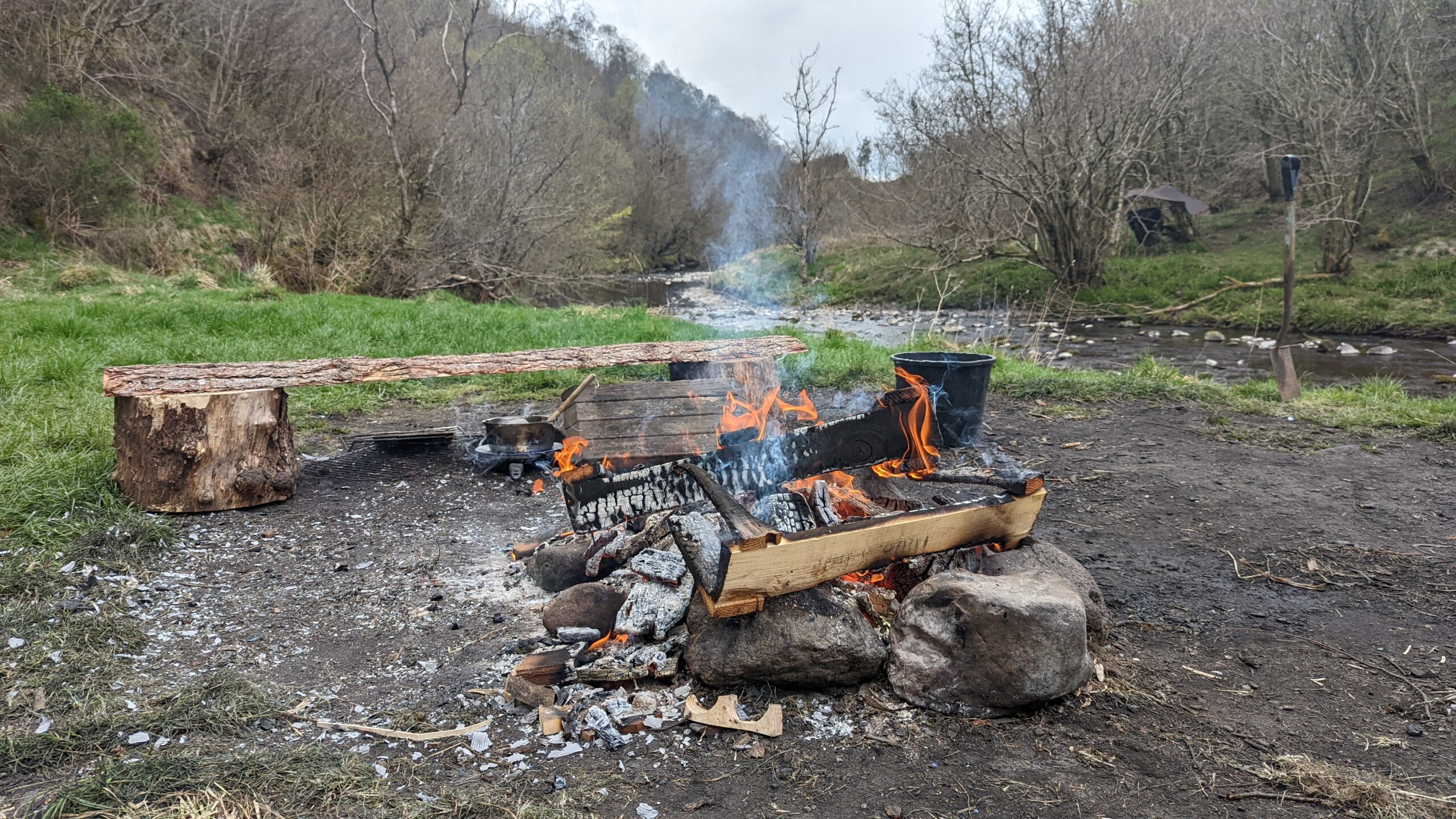
The collecting of any deadwood is actually bad for the environment. Home and food for many wee beasties (bugs and insects), lichens and will all eventually rot down providing nutrients into the ground.
If for example you pick up a piece of dead wood and it’s home to the last two pink and purple spotted beetles. You then use it to fuel the fire, that would be the end of that particular species. That’s not cool.
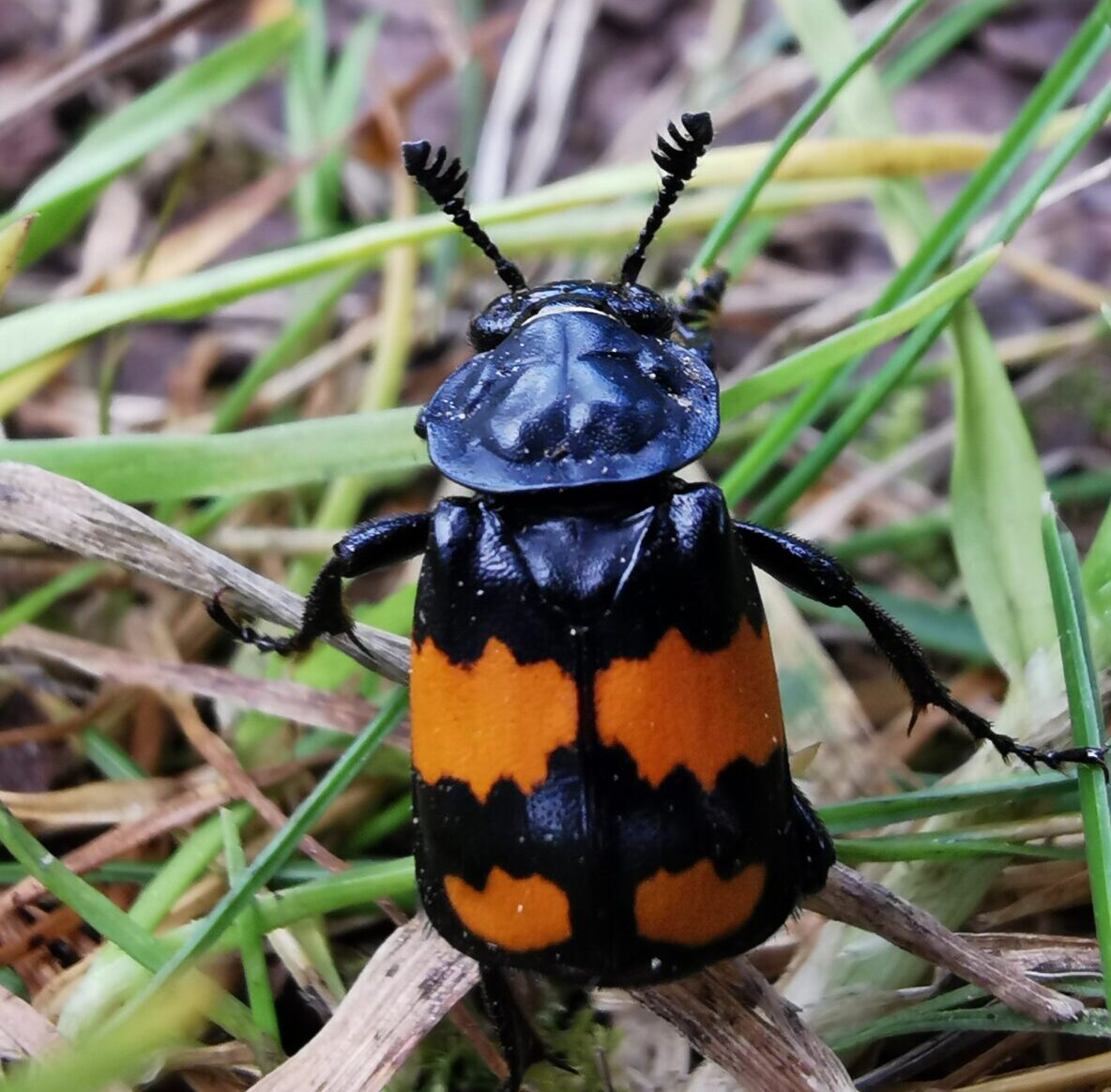
Chopping down trees for the purpose of burning is also a big no, no. Green (freshly cut) wood doesn’t burn well at all and in some instances can cause a lot of smoke. Apart from the fact it’s classed as vandalism it’s just not cool to be cutting down trees or hacking off branches to throw on the camp fire.
Another huge no, no is burying a red hot camp fire on a beach. The sand will only extinguish the flames but the coals/wood/embers will still be red hot. Imagine a small child or a dog running across that in bare feet!
If you leave a camp fire to cool down on it’s own the process can take 12-24hours. That’s not to say the ground beneath will have cooled sufficiently. Fires have been known to start days after being put out above ground but have slowly been burning underground on tree roots!
Here’s some tips on how to safely put your fire out:
Slowly pour water over the hot ashes, ensure you cover right out to the edge of the fire pit/stones.
When you think you have poured enough water, pour more.
Stir the ashes with a stick or shovel.
Pour more water.
Using the back of your hand, check to see if there are still any hotspots. Repeat afore mentioned steps if it’s still hot.
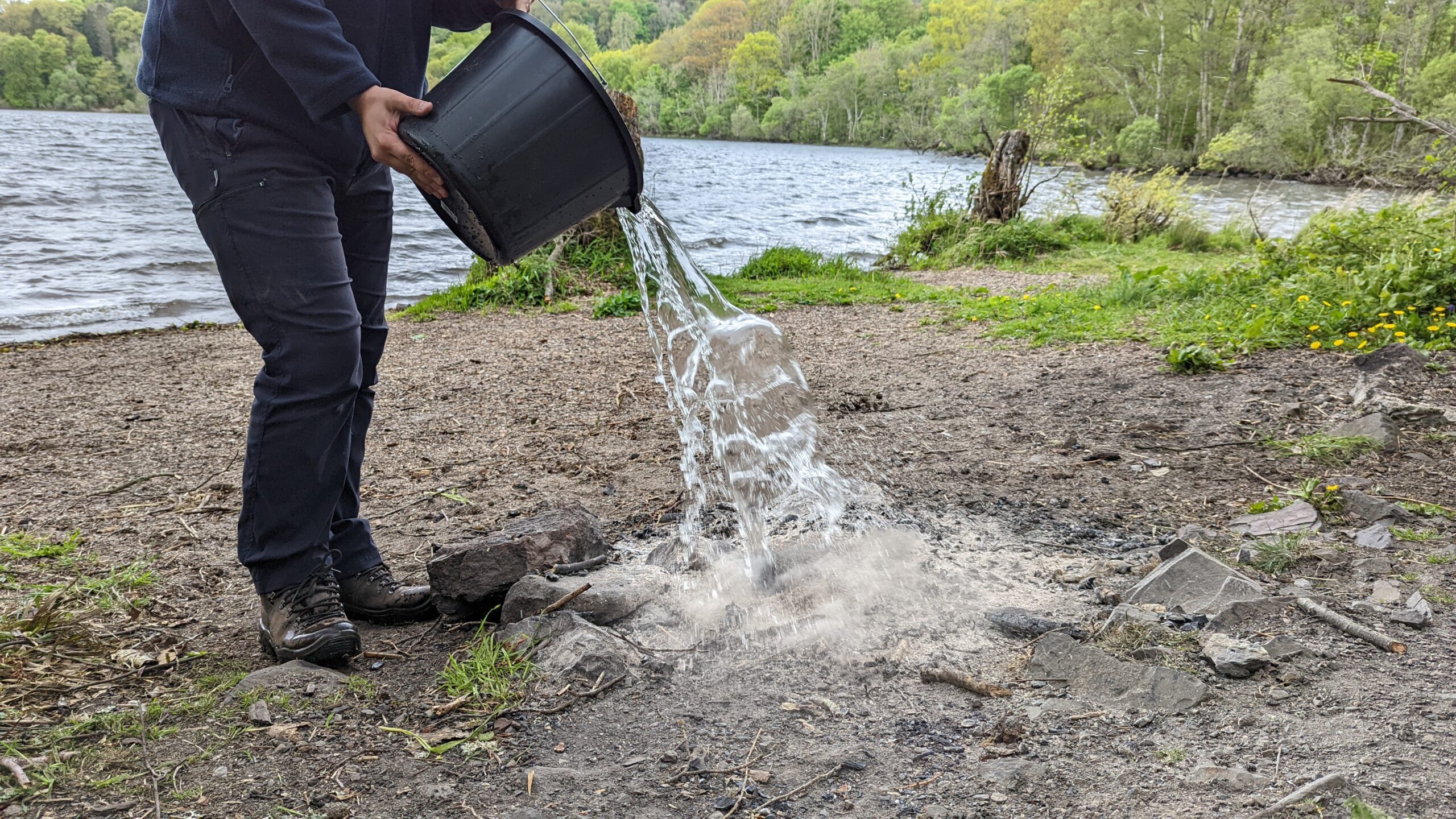
Do bears poop in the woods?
Here’s another question for you; why would you choose a lovely camp spot and then go and poo eight feet to the side of your tent and leave loo roll draped across the bracken? For those that think I’m imaging this scenario, I can reassure you it does happen.
I’m pretty sure most of us would be outraged to find human waste around our chosen camp spot, I know I would. It’s a fact that if you’ve gotta go, you’ve gotta go but there are a few things to think about first:
Number ones
Find somewhere discrete, away from your camp and at least 30 metres away from any water source. not near the loch you’ll be swimming in later or the wee burn.
Ladies, bag and bin your used loo roll. Gents, pick a tree.
Number twos
This requires a bit more preparation.
Again choose your loo with a view carefully, making sure you are at least 30 metres from any water source.
Surely goes without saying but NOT in a field of crops or livestock either.
Use a trowel to dig a small pit, about 6 inches deep. Maybe give yourself enough room to ‘aim’ too.
Preferably bag and bin the toilet paper but burying it can also be done. It’s better than leaving it as a calling card!
NEVER bury wet wipes or sanitary products.
Fill the hole back in and don’t forget to clean your paws.
Leave it better than you found it
The most popular reason to visit somewhere is because of it’s beauty, right? To leave no trace comes hand in hand with all three of the core values of SOAC that I mentioned at the start of this post.
We take our litter home with us to respect the interest of the people that visit after us.
We take our litter home to care for the environment.
By taking our litter home with us we are taking responsibility for our own actions.
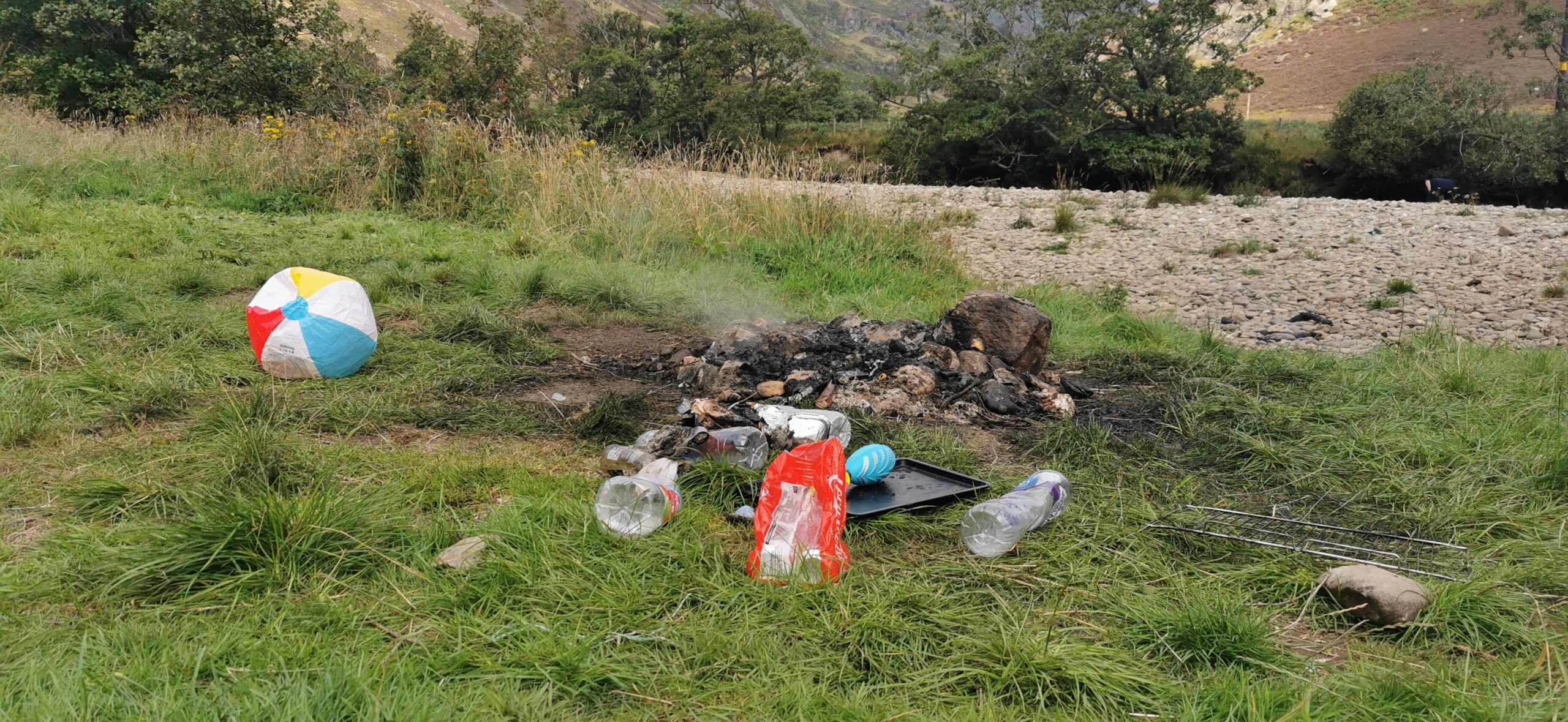
Leave no trace means dismantling a fire ring (which of course you won’t have if you have a raised fire pit), picking up all dropped food scraps, bottle tops and cigarette ends. It also means knocking down the stone stacks you spent an hour constructing! Pretty much meaning that the only way to know anyone was there is the flat grass.
If, when you arrive there is already litter lay on the ground then just spend a few minutes picking those bits up before setting up your own camp.
This may all sound like common sense but it’s a good reminder we should all tread lightly and leave no trace in Scotland. Enjoy your planned road trips, holidays and long weekends this summer.
